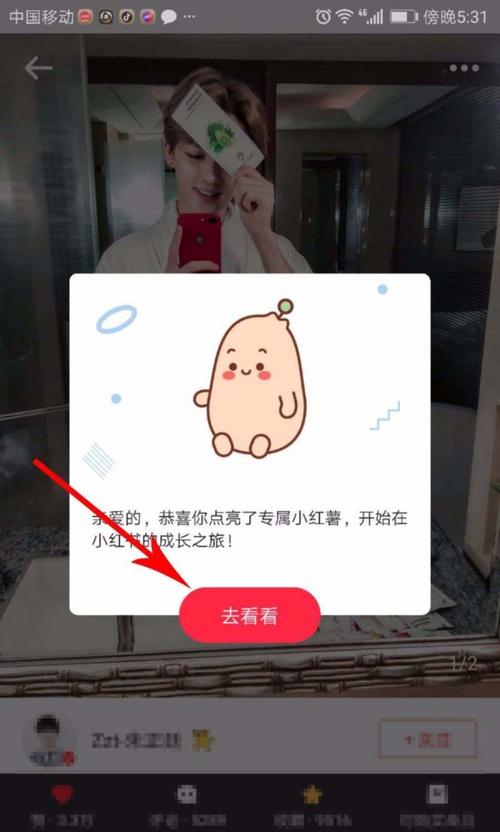对质性研究学术论文的评价方法不包括哪些
 检阅式
检阅式 圣也
圣也
学术是指系统的、专门的学问。学术研究则是借助已有的理论、知识、经验对科学问题的假设、分析、探讨和推出结论,其结果应该是力求符合事物客观规律的,是对未知科学问题的某种程度的揭示。学术(Academia)一词来自(akademeia)是古蠁雅典外的一间健身房,由 柏拉图 改为学习中心。后来,Academia在 希腊 被延伸来形容“知识的累积”.后来,在1 世纪,英国及法国的宗教学者常用学术一词来表示高等教育机构。英语称呼 academy而法语称呼为academe及academie。在英国 ,根据不同的 学术级别 分为 跟随者 、 讲师 、读者及 教授 。在世界上其他地方,学人都是被称呼为学者。学术行政人员却不包括在内。我国古代也有对“学术”的阐述的。《说文》谓“学”与“教”通。“教,上所施,下所效也”。《广雅释诂》则谓:“学,效也。”“效”即是仿效,即是传承。“术”,《说文》谓“邑中道也”,指道路,引申之,则门径、方法等义皆在焉。我国人将“学”与“术”合为一词,由此可理解为,学术是从累代所积之经验、知识中,求出通向未来的途径。随着现代科学技术的发展,学术研究更趋向于科学、规范、系统和学科的组合交叉研究了,其技术更为先进,其手段更为多样,其成果更是丰盛浩繁,显示出人类社会及其科学文明的不断进步与发展。
大学生手机质性研究2000字论文1.为什么喜欢玩手机 2.怎样把注意力从手机上转移到老师身上与黑板
 知人
知人论文质性研究不用问卷怎麼做
 色啦
色啦 秋
秋
网上找数据,或者网上发问卷,或者自己编数据,(只要不怕死),访谈,图书馆查资料除了这些还有别的答案吗?那些我都做了可以老师说不够,有没有更好的答案?观察、实物分析、民族志研究、论述分析、访谈研究、实地调查、参与式观察
定性研究和定量研究的区别
 孔子反走
孔子反走 瓜祭
瓜祭
二者区别在于定性研究就是对研究对象进行“质”的方面的研究,定量研究是对社会现象的数量特征、数量关系与数量变化进行分析研究。 定性研究分为三个过程:分析综合;比较;抽象和概括。 定量研究是按照某种数理方式进行加工整理。
护理研究学里的科学的本质是什么?
 所重
所重 百灵鸟
百灵鸟
全国2010年1月高等教育自学考试 护理学研究试题 课程代码:03008一、单项选择题(本大题共20小题,每小题1分,共20分)在每小题列出的四个备选项中只有一个是符合题目要求的。请将其代码填写在题后的括号内。错选、多选或未选均无分。 1.侧重于探讨现象的本质,发现新理论框架和模式的研究属于( )A.质性研究B.前瞻性研究C.实验性研究D.类实验性研究2.现象学研究属于( )A.量性研究B.质性研究C.实验性研究D.类实验性研究3.在研究中设对照组的主要目的是( )A.确定研究对象B.确定研究方法C.增加研究可信度D.排除干扰因素的影响4.研究者应告诉研究对象研究目的、步骤及可能产生的问题,这样做是为了维护研究对象( )A.自决的权力B.知情的权力C.避免伤害的权力D.保护隐私的权力5.评判写作语言是否朴实,文章是否通顺流畅,是为了评价科研论文的( )A.选题B.文学性C.讨论和小结D.研究方法和结果6.提高研究结果的价值关键在于立题要( )A.有吸引力B.有新意C.方向有深度D.有先进仪器设备7.个案研究属于( )A.实验性研究B.质性研究C.量性研究D.回顾性研究8.关于抽样误差,下列叙述不正确的是( )A.能够被控制和消除B.增加样本量可以减小抽样误差C.改进抽样方法使样本更具代表性可以减小抽样误差D.选择变异程度小的研究指标可以减小抽样误差9.调查研究中最多选用的方法是( )A.访谈法B.问卷法C.观察法D.测量法10.科研论文第一段“前言”部分主要叙述内容是( )A.研究对象入选条件B.研究背景和预期目的C.护理干预措施D.收集资料方法和步骤11.关键词是一种( )A.缩略词B.代码语言C.分类语言D.检索语言12.非实验性研究设计内容的特点是( )A.随机分组B.不施加干预C.随机抽样D.设对照组13.护理研究步骤中最关键的阶段是( )A.选题和确定课题的过程B.科研设计C.收集资料D.书写论文14.类实验性研究的设计内容一定有的是( )A.随机分组B.设对照组C.干预内容D.随机取样15.观察法的主要优点是( )A.信度高B.效率高C.可收集到任何资料D.应用范围广、方便16.在采用观察法收集资料的过程中,研究者参与被观察者的活动,但研究者主要角色仍是观察。此观察者的角色类型是( )A.完全参与者B.观察的参与者C.参与的观察者D.完全观察者17.关于结构式观察法,下列叙述正确的是( )A.观察者事先确定样本B.观察者没有明确的观察工具C.采用日记的方法记录事实过程D.在观察中观察者可随时修改研究目的18.关于问卷调查法的特点,下列叙述不正确的是( )A.省时省力B.样本弹性大C.收集资料范围较广D.收集资料方式单一19.表示二分制研究工具内在一致性的数值是( )A.KR-20值B.重测信度系数C.Cronbach’α相关系数D.等同性相关系数20.比较200例成年男性和200例成年女性血压平均值有无差异,应选择的统计学方法是( )A.t检验B.检验C.u检验D.秩和检验二、多项选择题(本大题共10小题,每小题2分,共20分)在每小题列出的五个备选项中至少有两个是符合题目要求的。请将其代码填写在题后的括号内。错选、多选、少选或未选均无分。 21.关键词设立的目的是( )A.可迅速查到文献B.便于收集资料C.便于读者了解论文主题D.提高论文的引用率E.推动研究工作进度 22.选题过程可以体现研究者的( )A.临床工作B.科研能力C.理论水平D.学历背景E.工龄长短23.科研工作具有( )A.独立性B.创造性C.社会性D.连续性E.探索性24.信度的主要特征是( )A.稳定性B.科学性C.实用性D.等同性E.内在一致性25.实验性研究的设计需包括的内容有( )A.设对照组B.可不设对照组C.随机分组D.不需随机分组E.人为的施加因素26.可选用测量法进行测量的内容有( )A.血压B.焦虑程度C.红细胞数D.护士的洗手行为E.老年人的健康观念27.用来表示研究工具内在一致性的是( )A.折半系数B.KR-20值C.重测信度系数D.Cronbach’α相关系数E.等同性相关系数28.可应用于计量资料的统计学方法有( )A.t检验B.检验C.标准差D.构成比E.平均数29.关于无结构式观察法,下列叙述正确的是( )A.观察者无明确的观察工具B.观察者应用量表进行记录C.观察者采用日记的方法进行记录D.观察者应用观察记录表格进行记录E.在观察中观察者可随时修改研究目的30.在统计学中说明离散(变异)程度的指标有( )A.均数B.全距C.方差D.标准误E.标准差三、填空题(本大题共10小题,每小题1分,共10分)请在每小题的空格中填上正确答案。错填、不填均无分。 31.护理学可称为一门综合性_____________。32.科学研究是一种有系统地探索和_____________的活动。33.《中目》(医药卫生)刊物的编排方法采用以_____________为主。34.在观察法中,观察内容和项目应该依据课题的_____________而选定。35.量性研究是一种_____________研究的方法。36.论文题目不能太长,一般以不超过_____________字为宜。37.研究对象可以自由参加或退出研究,这属于研究对象_____________的权力。38.在研究工作中对已经获得的数据应该作必要的检查,常用的检查包括专业检查、统计检查、_____________检查和计算机检查。39.研究课题主要来自_____________。40.研究工具的内在一致性指组成研究工具的各项目之间的_____________性或内在相关性。四、名词解释(本大题共5小题,每小题4分,共20分)41.变量42.引文43.量性研究44.计量资料45.效度五、简答题(本大题共4小题,每小题5分,共20分) 46.简述摘要的书写内容和注意事项。47.简述护理研究选题的注意事项。48.简述科研设计的类型。49.简述查阅文献的目的。
如何提升教师的科研能力
 恶搞版
恶搞版 不入则止
不入则止
一.深入学习,提高认识。1.深入教育一线调查了解情况,掌握第一手资料并进行梳理、分析、提炼、升华——即调查研究,这是教育科研必需的也是基本的内容和方法。2.如果说科研是教育生命的源泉,那么,课题便是教育科研的起点、旗帜和抓手。课题的能量是巨大的、神奇的。因为它有智慧的能量。名师走的是课题研究之路,名校走的是课题研究之路,课题研究也是区域性教育改革与发展的必由之路。3.教育经验来自教育实践活动。只有及时地认真地科学地总结,并上升到理性的高度,才能在更广泛的范围内指导教育实践活动。卡尔.马克思在《资本论》中已明确地指出——“理论的概念必须要由大规模积累的实际经验来完成。4.台湾诗人痖弦有句绝美的诗——“海,蓝给自己看”。就像那只破水罐,悄然为自己开一朵花,教育科研工作者以缄默淡泊自己的美丽,只要立足于学生、教师、课堂和学校,关爱生命、关照心灵、关注成长,走教育教学改革的探索之路,管理必然有新视野,课堂必然有新天地,课改必定有新干线,家庭教育必定有新亮点。5.教育科研其实很简单,她是需要耐得住寂寞的事,拓宽基础、专一深入、痴情关注、大胆设想、艰苦奋斗,都需要我们比平常人晚睡早起、按照规律下笨功夫,不仅需要积极地入迷、奋发、获得,大部分时间里还需要在宁静平和的状态下反思,在教育科研中寻觅理味、趣味、情味、艺术之味,乃至人生之味。6、用握过粉笔、教鞭的手,用批改过考卷、作业的笔,记录下、整理出教育生活中一个个专题,诸如“教育现代化”、“素质教育”、“课程改革”等等,从而走过亘古走过蛮荒,走过森林走过雪原,与那些高尚的人们和思想进行心灵沟通。如此不断沟通,不断蒸馏,不断品味,即是教育科研工作者的臻妙心境和生活享受。一、分析问题,寻求对策。1、教育科研中存在的问题和对策学校层面:申报课题多,深入研究少.检查汇报多,平时落实少.装门面赶新潮多,联系实际少.追求短期效应多,持之以恒少,应付上级检查多,解决问题少.教师层面:1.参与教育科研的目的不明确.教科研≠发表文章2.选题不明确.3.研究过程随意4.片面追求成果对策1.树立五种意识思想是行动的先导,只有正确的思想意识,才能产生正确的行动。1) 树立先导意识。工欲善其事,必先利其器2) 树立主动意识。变要我搞研究为我要搞研究3) 树立服务意识。贴近学校、教师、教育工作4) 树立“过程”意识。教育科研不仅是写的过程,还是一个学习、思考、实际总结的过程。要把落实教科研过程与追求教科研成果放在同等位置。5) 树立“创新”意识2.要抓住课堂教学主阵地,把教师当成实验室,把教师、学生作为实验对象。3.把工作中最令人烦恼的问题作为研究对象A. 树立问题就是课题,教什么研究什么,需要什么研究什么,怀疑什么研究什么。B. 在选题时力求做到短、平、快。研究的角度宜小、研究的周期宜短、研究的内容宜是实。做到从问题中来到问题中去。4.把工作和教育科研有机的结合起来A. 建立学校的课题体系,用来统领全局B. 搭建教师参与教育科研平台C. 引导教师分层参与。真正实现科研兴校、科研兴师。一、理论引导,科学实践。引用《江苏教育与研究》主编方建华教授的讲座 从问题出发:教育科研的基本策略与方法第一讲 教育科研概述 第二讲 从问题到课题:教育科研的基本策略与方法 第三讲 教育论文、报告的写作与投稿第一讲 教育科研概述 从本质上讲:教育科研是一种认识过程,以教育现象为研究对象,以发现教育规律知识、丰富教育理论为导向,以解决教育实践问题、推进教育发展为目的。 三个基本要素:客观教育事实、教育科学理论和研究方法技术 。 基本功能:解释、预测、控制的功能 基本类型:基础研究、开发研究与应用研究 基本层次:宏观研究、中观研究与微观研究 基本宗旨:揭示教育现象的本质,反映教育过程的规律,解决教育实践的问题。 中小学校教育科研的特点:一般以应用研究、微观研究、行动研究、校本研究为主。需要认识的两点: 1.教育科研≠写文章 2.教育科研≠教学研究 要正确认识并处理好教育科研与教学研究的关系: 区别:教研与科研是两码事。但长期以来,在人们的观念上,仅把帮助中小学教师分析教材、研究教法,组织教学经验的交流与推广,作为教育科研的主要方面,导致了相当多的所谓教育科研停留在单纯的教育经验的总结层次的教学研讨上。 这两个概念无论是从研究的范围还是研究的目的等方面都有很大的区别。 教学研究范畴狭窄,基本上主要是教育的微观领域的问题,主要包括教材教法的研究、教学的组织管理及一般性的教学问题研究。而教育研究则不同,其研究范围广大,不仅涉及教育的微观,而且也涉及中观、宏观等问题,不仅研究教育内部的联系,而且涉及教育的外部联系,不仅研究教育的现状,还研究教育的历史、预测教育未来趋势等。教育科研是个上位概念。意义:____科研兴校,科研强师是促进学校发展、促进老师专业化的必由之路。——提高教师自身素质,促使师资队伍的科研化,提高教师的专业化程度。——丰富教育理论,促进教育科学体系化。谁能搞教育科研? 我们每个老师既是教育者也都是研究者。当然,作为从事教育科研人员的条件 首先是主观条件: ——科研意识:科研型教师的职业自觉 作为教师来说,对我们日常的教育活动是否具有一种问题意识、反思意识和概括提升的意识,是非常重要的。 我们民族素有“尚实”的传统与“务实”的精神,这就使得广大教育工作者一般都“重实践、轻理论;重经验,轻科研”,教师以“教书匠”自称。 ——科研理论:科研型教师的专业基础 ——科研能力:科研型教师的核心素质 ——思维方式:科研型教师的人格特质 科学研究的根本追求是探索真理。 真理又分事实真理和理性真理(指涉性真理)。事实真理的研究,主要是自然科学研究的能事,追求事实真理,判断的标准为“是否真实”;而对理性真理的研究,是人文科学研究的能事,需要通过哲学反思,逻辑推理等获得。需要探索、理解事实行为背后的意义与价值。? 教育问题是复杂的,往往教育事实问题与价值问题纠缠在一起。这就对教育科研的方式提出特殊要求。我们的教育科研眼光不能仅局限于教育事实界和现象界,而要探索教育事实背后的意义、教育价值以及教育活动中透析出的生命哲理和智慧。? 教育科学研究应该定位于关注“何为教育”的学问、“如何教育”的智慧以及“教育为何”的觉悟,从而对教育理念、教育实践和教育审美三大层次上的探索、提升。? 需要我们确立新科学精神,改变传统思维方式,不能太功利,不能太工具理性化。强调科学与人文相整合的思维方式。——科研道德:现代化教师师德的新内容。 要研究真问题,做真学问题。其次是客观条件:良好学术氛围。 基于合作的科研团队。 学校的领导支持。 研究资料、设备充足。 研究时间、空间和人员的保证第二讲 从问题到课题:中小学教育科研的策略与方法 怎样开展教育科研呢?最重要的是操作问题。从总体上讲,要坚持“校本研究”的理念。 一、校本研究:教师专业发展的必由之路 ■ 校本研究,就是要求学校教育科研要以学校为本,要以课堂为现场,以教学为中心,以学生为主体,是教师‘充满思想的行动’,是教师进行反思的方式。 ■校本研究的特点:彭纲所长将其形象比喻为草根化研究,是一种“为了学校,基于学校,在学校中” 的研究。强调:在行动中研究,在研究中反思,在反思中学习,在学习中成长。 强调:校本研究并非重起炉灶,另搞一套,它应该“生长”在过去的“地基”上。 基于学校已有教育实践和教科研成果。 校本研究可以是过去课题研究的整合和延伸 比如;研究性学习、综合实践活动等课题(校本课程开发和教学模式创新)、分层教学模式等,已经具有校本研究的特征;在此基础上整合和延伸,有利于把研究引向深入 二、中小学教科研的内容、策略与方法 主要内容 ①校本课程开发——教师是课程的开发者,教师即课程; ②校本教学研究——教学模式创新、学习方法研究等; ③校本教师培训——促进教师专业发展的参与式培训和教学反思,凸现“以教师为本、以能力为本、以发展为本”; ④校本管理研究——促进构建现代学校制度的研究。二、中小学教科研的内容、策略与方法 主要内容 ①校本课程开发——教师是课程的开发者,教师即课程; ②校本教学研究——教学模式创新、学习方法研究等; ③校本教师培训——促进教师专业发展的参与式培训和教学反思,凸现“以教师为本、以能力为本、以发展为本”; ④校本管理研究——促进构建现代学校制度的研究。课题从哪里来呢?—主要来源于教育实践中的实际问题。 比如,学生学习成绩分化问题。学习分化的原因是什么?从何时开始?如何克服?这就需要调查、需要开展实验。比如 中小学衔接问题,学生学业成绩与非智力因素的关系问题等,比如留守儿童问题,独生子女教育问题,青少年心理健康问题,等。? 要正确区分什么是真正的教育“问题”?有三个层次:? 1、现实中出现的问题:Problem [‘prɑbl?m] n. 问题,疑难问题,麻烦的事, 比如:学生中小眼镜增多的问题;成绩分化问题;? 2、共同研究议题,公共可以讨论的话题:Issue. n. 问题;争论;争议? 比如:学生中小眼镜增多的问题是否普遍?比例如何?? 3、学术问题、研究课题:question['kw?st?] n. 1.问题;询问;2.要讨论(或考虑)的问题;争端;难题;3.疑问? 是正式提出的值得研究的问题,需要通过实证研究判断是否属实;需要通过哲学反思,寻找教育现象、教育行为背后的观念,意义,价值,探寻解决之道。? 比如;可以从不同学科提出问题:是课程负担过重引起的?? 是在校时间过长引起的?是学生营养结构不合理引起的?? 是学校建筑的光照度不足等引起的?还是学生上网时间、看电视时间太长引起的。。。发现并提出问题,这是一切研究工作的起点。 从所发现的教育问题中进行筛选值得研究的问题,也就成了教科研课题。 <,/SPAN> 最为困难,最为重要。 选题决定研究价值;尽量选择全局性和规律性问题 选题制约研究成效;选题要恰当 选题制约研究者的水平提高怎样选题?选题必须遵循一定的原则。 无为而无不为,有不为方能有所为 工作需要原则 科学性原则 可行性原则 不可贪大求洋,赶时尚 兴趣爱好原则研究基本步骤 ——对问题进行梳理:学校层面、学科教学层面(教研组、年级组)、教师个人层面 ——形成问题链或问题树,发现带有普遍意义的关键问题,或亟待解决的问题 ——确定研究课题,筛选和学习与课题有关的理论,撰写选课报告,进行课题申报 ——进行开题论证,选择研究范式,确定研究思路和方法,撰写研究计划,制定研究方案 ——实施课题研究,进行实地调查、课堂观察、教育实验或测量,记录和收集研究资料 ——整理分析研究资料,撰写研究成果(论文或报告或叙事或案例分析) ,发表和交流研究成果 ——撰写结题报告,进行结题论正 ——总结和反思课题研究(小组讨论或个人反思),提出改进策略 教育科研范式与方法(1)量化研究范式(定量研究\实证研究)——运用教育测量、教育评价、抽样调查、教育统计和教育实验等的研究类型(2)质的研究范式(定性研究、实地研究)——运用叙事研究、教育网志(BLOG)、案例研究、课堂观察等类型。 研究范式的分类是相对的,例如,课堂观察法即可以采用定性观察,也可以采用定量观察。当前,中小学质性研究的范式正成为趋向,但与量化研究相融合应该成为最终的走向。 具体研究方法之一:教育叙事研究 教育叙事就是“讲教育故事”。要求教师以合理有效的方式解决自己在教室或其他场所里发生的教育、教学问题,然后将自己怎样遇到这个问题,怎样解决这个问题的整个教学过程“叙述”出来。 教育叙事研究的作用:记录与反思 ■教育叙事研究是记录教师教学生涯和成长历程的重要方式苏霍姆林斯基说:“我建议每一位教师都来写教育日记。这些记录是思考和创造的源泉。那种连续记了10年、20年甚至30年的教师日记,是一笔巨大的财富。每一位勤于思考的教师,都有他自己的体系、自己的教育学修养。” ■教育叙事研究是教育教学反思的重要方式教育叙事研究的要点(1)叙事应该有一个主题。叙事的“主题”是从某个或几个教学事件中产生,而不是将某个理论问题作为一个“帽子”,然后选择几个教学案例作为例证。(2)教育叙事形成的报告是一种“教育记叙文”而不是“教育论文”。这种教育“记叙文”比传统的教育“论文”更能引起读者的“共鸣”并由此而体现它的研究价值。(3)叙事研究报告以“叙述”为主,但是在自己“反思”的基础上写的,“夹叙夹议”。能够更真实、深入地反映研究的全过程和作者的思考。(4)教育叙事对改进自己的教育教学思路,提升自己的教育教学水平起到了强有力的推动作用。既是一种指导参与式培训,又是一种探究式培训。具体研究方法之二——教育网志(Blog) Blog的概念:互联网络上的教育叙事(研究报告)交流平台 ■BLOG是Web log(网络日志)的简称,而BLOGGER(博客)则是写BLOG的人。一个Blog就是一个网页,它通常是由简短且经常更新的帖子所构成;这些张贴的文章都按照年份和日期排列。网络日志(Blog)将过去以书面为载体的叙事研究报告,架构在现代信息技术平台上,实现了教育叙事研究的新发展。具体研究方法之三——课堂观察研究课堂观察(classroom observing)是教师获得实践知识的重要来源,也是教师用以搜集学生资料、分析教学方法的有效性、了解教学与学习行为的基本途径。是研究者带着明确的目的,凭借自身感官及有关辅助工具(观察表、录音录像设备,直接(或间接)从课堂上收集资料,并依据资料做相应研究。 课堂观察的内容 ■自我观察(一边讲课一边观察):观察对象主要是学生的行为,包括学生的学习行为、人际间互动情况,对教师授课的反映等,以及有关学生穿著、仪容、携带的物品、课桌上下摆放的东西等非学习性行为表现。 ■观察他人(听课):包括教材运用、讲解能力、提问技巧、教学沟通、多媒体运用、学生行为管理、教学准备、组织、评价,也包括教师的课堂观察能力、学生的非学习性行为、教室内外的情境等。课堂观察是一种科学的观察方法,不同于日常的观察。 ■定性方法:研究者依据粗线条的观察纲要,在课堂对观察对象做详实的多方面的记录,并在观察后根据回忆加以追溯性的补充和完善。分析手段主要是归纳法。文字记录是描述性的和评价性的,并且可以把现场感受和领悟记录下来。 ■定量方法:运用一套定量的、结构化的记录方式(工具表)进行观察,既可以采用“钢笔录音机”,也可以运用录音录像和电脑软件进行分析。 ■主要技术方法手段:----课堂教学录像、录音;----以时间标识进行选择性课堂实录;----座位表法;----提问技巧水平检核表;----提问行为类别频次表;----课堂练习目标层次统计图;----弗兰德斯语言互动分类表;----学习动机问卷调查和访谈;具体研究方法之四——案例研究 ●案例是一个实际情境的描述,包括有一个或多个疑难问题,同时也可能包含有解决这些问题的方法。 ●教学案例描述的是教学实践。它以丰富的叙述形式,向人们展示了一些包含有教师和学生的典型行为、思想、情感在内的故事 ●教育案例是一个教育情境的故事。在叙述一个故事的同时,人们常常还发表一些自己的看法,也就是点评。所以,一个好的案例,就是一个生动的故事加上精彩的点评。(上海教科院 张肇丰) 案例是对某个过去发生的事件的真实描述……,目的是引发对一个特殊情境的讨论和分析。 ■案例的特征表现为:----真实性:案例必须是真实发生的事件;----典型性:必须是包括特殊情境和典型案例问题的故事;----浓缩性:必须多角度地呈现问题,提供足够的信息;----启发性:必须是经过研究,能够引起讨论,提供分析和反思。----学习效果的后测分析。具体研究方法之四——案例研究 ●案例是一个实际情境的描述,包括有一个或多个疑难问题,同时也可能包含有解决这些问题的方法。 ●教学案例描述的是教学实践。它以丰富的叙述形式,向人们展示了一些包含有教师和学生的典型行为、思想、情感在内的故事 ●教育案例是一个教育情境的故事。在叙述一个故事的同时,人们常常还发表一些自己的看法,也就是点评。所以,一个好的案例,就是一个生动的故事加上精彩的点评。(上海教科院 张肇丰) 案例是对某个过去发生的事件的真实描述……,目的是引发对一个特殊情境的讨论和分析。 ■案例的特征表现为:----真实性:案例必须是真实发生的事件;----典型性:必须是包括特殊情境和典型案例问题的故事;----浓缩性:必须多角度地呈现问题,提供足够的信息;----启发性:必须是经过研究,能够引起讨论,提供分析和反思。●教学案例与教案、教学设计的区别“教案(教学设计)”是事先设想的教育教学思路,反映的是教学预期;“教学案例”则是对已发生的教学过程的描述,反映是教学结果。 ●教学案例与教学实录的区别“教学案例”与“教学实录”同样是对教育情境的描述,但“教学实录”是有闻必录(事实判断),而教学案例是根据目的和功能选择内容,并且必须有作者的反思(价值判断)。 不能把教案、教学设计、课堂实录,乃至教学总结、教学测试题,统统纳入 “教学案例”。 教学案例的意义 ●顾泠沅先生认为:----案例是教学问题解决的源泉;----案例是教师专业成长的阶梯;----案例是教学理论的故乡。第三讲 教育论文、报告的写作与投稿? 写论文不等于搞科研,但搞科研必须写论文。? 保存、交流、发表成果的必需;与别人分享成果,推广应用成果,转化成教育生产力的必需。? 职称、职务晋升的必需,更是自我实现的必需(文人以“著书立说”“成名成家”为荣)。 教育研究的最终成果必须以一定的方式表达出来,一方面是保存研究成果的需要,另一方面也是交流研究成果的需要。 表达教育研究成果的方式一般有写教育论文和写研究报告(包括调查报告、观察报告、实验报告等)。 表达方式以议论、科学性说明相结合为主,适当辅之以叙述和描写。讲究严谨、简明和流畅的行文风格。 当然,也有杂志编辑偏好文学色彩浓的行文,大多数学者认为教育论文仍然是科学论文,不宜太花哨。关键是把思想表达清楚,把道理讲明白。可见,大多数老师都能写好教育论文,并不是学中文的老师的专利。当然,要写好论文,要掌握一定的写作技巧,要勇于动笔、勤于动笔。 一般中小学教师可从写教育随笔入手,逐渐培养写论文的兴趣,积累经验,增强成就感,继而写教育论文,甚至写更为规范严格的教育研究报告。 一、关于教育随笔的写作 提倡初学者走从教育随笔到教育论文,从教育论文到研究报告的路线。 随笔,英文essay,短论的意思,是一种散文体裁;篇幅短小,表现形式灵活自由,可以抒情、叙事或评论。它不拘一格,形式多样、生动活泼。 ? 随笔,在拉丁语中意思为“尝试”。蒙田随笔取的就是这个意思。尝试,意味着未完成,意味着可以从不同的角度和广大的层面探讨同一事物,意味着对现有秩序的怀疑、否定和颠覆。随笔的生命在于随。这种文体最重要要的是要体现个性化。是一种不断生成的文体。鲁迅喜欢杂感,本雅明赞赏“断片”,都是因为随笔可以最大限度地容纳自由与批判精神。教育随笔顾名思义,就是谈教育思想观点的随笔。 在写作样式上也没有什么固定的限制,常见的有借事说理、夹叙夹议等形式。 作者要着力描写一个教育事件,不用太多的语言去发议论、做点评,把一件事情写清楚,文章的结尾有个简单的点题就可以了。读者通过读作者叙述的这件事,就能受到触动,明白一些道理,道理喻于故事之中。 可以夹叙夹议, 作者在叙述一个事件的同时,发表自己的见解,一边叙述一边评论;也可以是把事件先叙述完,再做评论。 教师如何才能写好教育随笔呢? 教育随笔其特色就在一个随字――随手、随便、随心。 随手 对即时发生的和看到事件及思想火花,要及时、随手捕捉并记录。养成随手写的习惯,坚持记教育日记。 随便 随笔没有什么格式的要求,文字也可长可短,可庄可谐。用200字就能说清楚,就不一定要凑到1000字。如果没想好这件事说明了什么,却让您有所触动,不说不快,也不必硬憋着要找什么理论做依托,可以把事情写出来,让读者自己去理解。 随心 随心有两层意思,一是随心所欲,没有太多的限制;二是笔要随脑。我手写我心。文章是笔写出来的,但是大脑想出来的,所以 笔要随脑。随笔要想写好,必须有自己的独到之处,需要一双善于发现的眼睛,一个善于思考的大脑,要注意观察,多读点书,用心去思考。有正确的理念,才会有正确的眼光;有正确的眼光,才能有精彩的发现。最关键一点:勤动笔,只有动笔写了,才能有好的随笔。 要善于捕捉题材。 —— 成功的喜悦。教育教学中,为什么会取得成功?主要收获在哪里?抓住自己的成功之点,深入地想 ——失败的教训。 教育教学中为什么会失误?主要症结在哪里?用什么方法弥补?应吸取什么教训? ——教材是我们的教学依据,但不一定是完美,只要我们深入而冷静地研究思考,也许会有新的认识或新的疑点 —— 在讲课过程中,感觉上的得心应手,学生思维火花的不断迸发,突然受到某种悟性与启示 —— 在听课过程中,通过比较,找出差异,是产生新观念和新思想的导火线。 ——班主任工作中,课后师生交谈中、学生学习的成功或失败中也有题材锤炼题材。 ——立意要新。不仅自己觉得有新意,要让别人觉得耳目一新,不可重复别人的观点。 ——列举实例要具体生动。在举例时一定要把事实讲明白。 ——要做到小中见大。从个别具体的事例出发,能体现出一般规律,反映较深刻的问题和道理。 ——文章结构可多样化。二、关于教育论文的写作首先要给论文准确定位? 定点:解决内容? 经验型----教改型----论述型? 定面:解决层次? 评析性---学术性---课题性? 定向:解决方向? 交流类---评奖类---发表类其次明确教育论文的撰写过程? 确立论点:对问题的根本看法? 整理材料:围绕论点,分析研究材料? 编写提纲:事先设计论文的框架 突出重点、深思熟虑、思路流畅、结构完整? 撰写草稿:一气呵成? 修改定稿:精雕细琢 第三,要掌握教育论文的基本格式和要求
请问护理本科生除了当护士之外还能在那些领域发展呢?
 鬼饭店
鬼饭店 伤
伤
大专毕业的高级护理奇缺!!!什么是护理学?护理学是以自然科学和社会科学理论为基础的研究维护、促进、恢复人类健康的护理理论、知识、技能及其发展规律的综合性应用科学。护理学包含了自然科学,如生物学、物理学、化学、解剖学、生理学等知识。护士通过学习解剖学、生理学,才能观察与分辨生理与病理的变化,并能准确无误地提供治疗,如注射、导尿等。护理学也包含了社会及人文科学,如心理学、伦理学、社会学、美学等知识。护士通过学习心理学、社会学,才能提供满足人的心理需要的护理,并能社会环境对人的健康的影响。护理学是一门应用科学,实践性较强,它结合了自然科学与社会科学理论,形成了护理的理论体系与护理技术操作。护理学是一门独立的科学,它与医学、药学、营养学等共同组成了整个医学领域。护理学专业的现状和前景护理学专业在中国的发展已有近百年的时间,尤其在近十余年来,护理专业在我国得以迅速发展:护理教育逐渐从中专走入大学,护理研究文章的数量和质量在提高,整体护理的护理观念在逐步深入,护理管理人员的视野逐步开阔,护理专业的范畴也在逐步扩展,循证护理的实践在兴起……等等。在护理专业发展的过程中,世界经济和社会的全球化发展趋势也对我国护理专业人员如何从知识、态度、技能方面提升专业素质带来了一系列的挑战,对护理专业人员的角色和技能均提出了更高的要求。本文从我国护理人力资源现状、护理观念、临床护理方式、循证护理、护理教育和护理管理方式等方面探讨了应对挑战的策略,并提出以下九项专业发展目标:1. 扩展护理人力资源2. 开阔护士视野3. 发展护理教育4. 加强护理研究5. 提升护理理念6. 完善临床护理方式7. 加强护理管理8. 扩展护理专业范畴9. 推广循证护理一、护理人力资源:现状和挑战(human resource of nurses) 1.每千人口护士比:我国护士严重不足 WHO的资料显示,1998年世界绝大多数国家每千人口护士比已经达到3‰以上,部分发达国家甚至达到30‰以上。印度、土耳其、巴西等国家的每千人口护士比例在1‰以下,经济发达国家每千人口护士比明显高于经济不发达国家。 但我国2001年平均 0.99护士 /千人口(医生: 1.62/千人口),每千农业人口护士比例为 0.18。 2.医护比例:我国比例严重失调 我国大陆与土耳其、巴西的医护比例1:1以下;香港地区、日本、泰国、德国、英国等国的医护比例为1:4以上;芬兰、挪威、加拿大等国家医护比1:6以上。 但我国医护比例严重失调,2003年为1:0.68(1952年为1:2.28)(资料来源:2001-2002年《西太平洋地区卫生资源报告》及《世界护理的现状、不足及预测》)。 3.护士床位比:我国比例不合理 世界许多国家都基本保持在1:1以上。以英国为例:普通病房护士与病床的比例一般是1:1;康复病房(High Dependent Unit)护士与病床的比例大约是2:1;重症监护病房(Intensive Care Unit)护士与病床的比例大约是5-6:1。 但我国2001年护士与床位之比为0.4:1,远远低于发达国家。 4.护理人员学历情况:我国护理人员学历偏低(中美比较) 2000年美国护士医院护士中,研究生毕业7.6%,本科毕业35.7%,大专毕业38.4%,社区护士中本科毕业22.5%,大专毕业48.2%。 而我国2003年中专占64.5%,大专24.315%,本科1.3%,以中专为主,教育层次偏低。 5.资料:全球部分国家和地区医护人力资源现状(1995-2000)国家 人均GPT($) 每千人口医 每千人口护士 医生:护士中国 740 1.62 0.99 1:0.61中国香港26437 1.54 6.22 1:4.04中国台湾12040 1.24 3.25 1:2.60日本 33715 1.87 7.79 1:4.16泰国 6100 0.38 1.55 1:4.20英国 --- 1.39 5.72 1:4.10美国 30088 2.68 9.16 1:3.40澳大利亚 37295 2.75 8.64 1:3.14(资料来源:2001-2002年《西太平洋地区卫生资源报告》) 6.全球护理人力资源状况:进一步的比较 护士人数: 美国210万,每千人口9名护士,但称缺口12万;澳大利亚16万,每千人口9名护士,但称护士严重短缺;而我国2003年护士人数 126.6 万,每千人口0.99名护士,若按医:护=1:1,缺口应为15万人。2001年卫生部对全国12家医院抽样结果显示:其中10家医院的护理人员严重缺编,平均缺编率为31.3%。 护士的平均年龄: 西方国家由于护士短缺问题,临床护士的普遍年龄偏高:美国45岁,澳大利亚40.4岁。而我国护士平均年龄偏低(<35岁),意味着高年资护士的流失较严重。 目前国际上普遍存在的问题: 护士工作量增加;护士人数下降;护士年龄偏大。 7.护理人力资源在突发事件中的需求 在处理突发公共卫生事件中对护理人员的比例要求更高,例如2003年抗击“非典”期间,北京市小汤山等“非典”定点医院的护士床位比:普通病房为2~3:1,重症病房为4~6:1。 8.总之,护士短缺问题:--中国是重灾区!!! 2002~2003卫生部护理人才需求预测研究课题指出(资料来源:卫生部《中国护理事业发展规划纲要2005-2010年》):2015年应达医生:护士=1:1,每千人口医护人员均为1.5,则护士数应为232.3万,应净增103.6万;护理人才招生数中专占50%,大专30%,本科1..5%、研究生0.5%。只有按照这种比例进行卫生人力配置,才有助于改变我国医护比例失调的现状,并有助于缓解护理人力短缺的问题,缩小同国际水平的差距。二、世界经济和社会全球化发展趋势对我国护理专业人员如何从知识、态度、技能方面提升专业素质带来了一系列的挑战(Challengefrom the globalization of world economics and society)。 1.护理服务的发展: 世界银行在1993年世界发展状况中明确指出:大部分的卫生保健工作应该由护士和助产士承担 2.护理专业面临的挑战(from NLN Journal, 2002.5.) 1) 人口老龄化和疾病谱的改变,以及需求的多样化:健康需求的变化引起服务模式的改变; 2) 知识和技术爆炸:高科技和信息化带来的挑战; 3) 世界经济和社会的全球化趋势:护理人力市场国际化; 4) 卫生保健领域消费者教育层次提高、传统医学、临终关怀带来的挑战:精神因素的作用、生命质量、疼痛管理、人的尊严; 5) 以人为中心的护理带来的护理内涵的复杂性问题:提高护理质量; 6) 卫生保健费用提高提出对卫生保健服务的管理问题(managed care):医疗保险制度改革; 7) 卫生政策的影响:社区卫生保健系统进一步完善,护理专业人员任务、工作场所和工作内容的转变,社区成为重要场所; 8) 多学科合作的实践形式对教育的挑战; 9) 护士短缺带来的终身教育与护理工作提高的问题; 10) 护理学科和护理研究的进步。 3.护理专业的全球发展趋势 总之,护理专业在全球的主要发展趋势是:护理人员将成为初级卫生保健的主要力量;护理人员将成为健康教育的主要力量;护理人员将成为医生和其他保健人员平等的合作者;为危重症患者提供高质量、高技术的护理仍是护理人员的重要任务;参与国际人才市场的竞争。 4.社会对护理人才态度、知识、能力要求(教育部研究课题,沈宁,2003) (1)综合知识 护理人才应能够融合自然科学和人文社会科学的知识,用以理解自我和理解他人;掌握与实践相结合的护理基础知识和专科知识;掌握一定的医学基础知识以适应护理工作需要;发展和应用解决问题、批判性思维的技巧;使用科学的数据和方法计划、实施和评价护理措施;应用社会、政治、经济、历史的知识分析专业问题;用书面和口头的方式有效地交流,并能清楚地表达个人的看法;建立有效的与他人合作的工作关系;理解不同的文化对健康的影响;理解护理专业的特点。 (2)职业价值和道德观念 护理人才应具备的职业价值和道德观念包括利他性(具有人文关怀理念,对他人利益和健康完好状态的关心);自主性(给患者提供信息做到知情同意;有尊严:尊重个人、群体的独特性和内在的价值);正直(遵守职业道德,恪守伦理的准则和执业的标准);公正(坚持道德、法律、人道的准则)。 (3)护理核心能力 护理人才应具备独立工作能力;健康教育与预防保健能力;教学能力;批判性思维的能力;沟通交流的能力;决策和解决问题的能力;组织协调能力 (4)自主学习和专业发展能力 护理人才应具备一定的科研能力,获取和利用信息能力,评判性思维能力,创新能力,自我发展能力。 (5)身心素质 护理人才应具备良好的身体,良好的情感特征,以及良好的适应能力和应变能力。 三、护理教育 (nursing ecation):逐渐从中专走入大学 1.中国护理教育概况 历史:主要分为四个阶段 1923-1952:多层次护理教育体系 1952-1966:单一层次的中专护理教育 1966-1976:文革期间护理教育受较大挫折 1983-至今:多层次发展(中专、大专、本科、研究生) 2.中国高等护理教育发展的几个里程碑: 1921年:美国洛克菲勒基金会开办了协和医院,并与燕京大学,南京金陵女子文理学院,苏州东吴大学,广州岭南大学,山东齐鲁大学等五所私立大学合办五年制高等护理教育; 1979年:卫生部颁布“关于加强护理工作的意见” 和“关于加强护理教育工作的意见”; 1980年:南京医学院及南京军区总院联合开办护理大专班 ; 1983年:天津医学院开设5年制护理本科; 1992年:北京医科大学设立护理硕士点; 1994-2000年:CMB资助88名护理硕士研究生; 2003年:第二军医大学护理系设立护理博士点。 3.2003年止我国护理教育规模现状(资料来源:卫生部《中国护理事业发展规划纲要2005-2010年》):研究生项目:13项本科项目: 132项大专项目: 199项中专项目: 规模逐渐减小 4.中国护理教育层次与规模与其它国家或地区的比较:应大力发展高等护理教育2003年中国、美国、日本护理院校统计表 中国 美国 日本 中国台湾博士学位 1 323 5 2硕士学位 12 367 25 11 本科学士学位 132 611 65 21大专 199 500 67 15中专 数百 250 461 8 5.只有通过学历教育,才有可能使护理人员沿着护理专业的阶梯逐步发展,成为专业人士:护理专业发展阶梯 (professional ladder) 分为5个阶段(Benner P. From novice to expert. AJN, 1982, March, 402-407.)(1)新护士 (novice)(2)入门护士 (advanced beginner)(3)称职护士 (competent)(4)熟练护士 (proficient)(5)护理专家 (expert) 6.护理教育发展目标(资料来源:卫生部《中国护理事业发展规划纲要2005-2010年》): 卫生部规划目标:到2010年,使护理人员大专以上学历不低于30%,其中三级医院中大专以上学历护士不低于60%,二级医院中大专以上不低于40%。 四、护理研究(nursing research): 研究论文的数量和质量在提高 1.护理研究是提升护理专业学术性的基础 美国在1952年创建《Nursing Research》杂志,同年成立“美国护理研究基金会”,标志着护理研究进入新纪元;20世纪全球护理教育研究生层次的迅速发展,为护理研究的发展提供了有力基础;国际上护理专业期刊杂志数量的增长为展示护理研究的发展提供了有力平台:2004共计174册护理专业期刊;其中36册进入ISI的SCI-expansion。 2.我国的护理研究:期刊数量在增长 1995年护理专业期刊只有6册(中华护理杂志,实用护理杂志,护理学杂志,护士进修杂志,护理研究,国外医学护理分册),2004年护理专业期刊增加到17 册。 3.我国的护理研究:论文数量在增加(资料来源:程金莲, 韩世范, 孙玉梅等. 护理人员开展护理研究现况调查.护理研究, 2004, 18(3): 457-461) 1994-1996年发表在上述5本护理期刊上的护理研究课题论文为17篇,而2000-2002年发表在该5本护理期刊上的护理研究课题论文增加到239篇 (X2=43.03, P<0.05);但研究论文占总体论文的比例仍较低(9.5%)。 4.护理研究方法呈多样化发展 定量研究设计的论文数量占主要比例:研究论文的设计范围较广,包括临床实验性研究、类实验性研究、调查性研究等。同时除传统的定量研究外,质性研究在我国护理研究领域正在悄然兴起,例如:现象学研究法、根基理论研究法、护理人种志研究法,等等。2002版的《护理研究》教科书上将质性研究方法加入。近一年来,全国举行了多次质性研究在护理研究中的应用研讨学习班。 5.我国的护理研究:科研设计方法的进步 1995年发表在5本护理期刊上的护理论文共计1655篇,在资料分析方法上只有11%用统计推断,9.27%用统计描述;而2002年发表在该5本护理期刊上的护理论文总数增加到3046篇,资料分析方法24.39% 用统计推断,9.39%用统计描述 (X2=55.01, P<0.05) (程金莲,韩世范,孙玉梅等,2004)。 RCT论文从1993-1995年的0.8%上升到1999-2000年的7.7%。(朱丹, 黄文霞, 刘莉等.《护理研究》随机对照临床护理试验性文献评价. 护理研究, 2002, 16(2):183-184.)。然而质性研究文章在该5本期刊中很少。 6.我国的护理研究存在的问题:跨学科的科研合作还很不够 1994-2002年研究课题论文的作者大多为同一单位内部合作,不同单位合作课题只有16.85%(资料来源:程金莲,韩世范,孙玉梅等,2004)。因此呼吁护理研究中跨学科、跨单位、跨地域合作。 7.我国的护理研究存在的问题:需要争取多方资助 1994-1999年发表的2410篇研究论文中只有89篇(3.69%)获得基金资助,2000-2002年发表的2460篇研究论文中有239篇(9.71%)获得基金资助(资料来源:程金莲,韩世范,孙玉梅等,2004)。护理研究基金资助来源较狭窄:较少获得市、省、部级、国家级科研基金;一般从医院、学院、CMB、香港护士训练与教育基金等途径获得少量基金。 8.小结:我国的护理研究存在的问题 人文类相关的选题相对较少;前瞻性研究和专科特色研究论文较少,总结性文章较多;运用科学的方法分析资料的文章较少;护理管理、护理理论、护理教学方法方面的研究论文较少;质性研究论文很少。 五、护理观念(philosophy of nursing):整体护理(holistic nursing)的护理观念在逐步渗透、深入 1.整体护理观念的渗透 整体护理是以现代护理理论为指导,运用护理程序,根据病人身体、心理、社会、文化、精神、发展等方面状况提供适合个体健康需要的身心护理,其目的为保证病人得到满意的、连续的护理。整体护理成为当前护理领域的热门话题:1994年-2004年以整体护理为题的论文共1009篇。 2.整体护理质量标准应以病人为中心,内容应包括: 1) 病人对住院期间提供的护理服务满意; 2) 病人了解自己的疾病和健康状况,并能积极配合治疗; 3) 病人了解自己所服主要药物的作用和副作用,并能正确服用和自我观察; 4) 病人学会一定的促进自己健康的方法; 5) 出院时病人和家属掌握回家后康复及照顾病人的应注意的事项; 6) 出院时病人及家属知道需要复诊的日期和再次医疗的指征和途径; 7) 医生满意度、护士满意度。 3.当前在实施整体护理过程中存在问题(资料来源:卫生部医政司王羽副司长讲话,2001年) 1) 护士数量不足:医院管理原因,如科室捆绑承包、护理管理原因,如人力资源配备的科学依据; 2) 护士职责界定问题:界定不清,辅助系统不到位;计算机管理带来的护士工作量增加; 3) 护士观念问题:注重技术操作,忽视专业能力;注重医嘱落实,忽视病情观察;注重治疗措施,忽视健康教育、心理与康复等护理的提供。 4.总之,我国整体护理实践的现状和局限性主要是: ●整体护理已从模式病房到全面铺开,但仍缺乏与之相适应的护理体制和整体护理观念 ●护理程序作为一种基本的工作方法已深入到护理各领域,但护士对护理程序仍停留于形式上 ●整体护理病历书写要求与现行法律法规的冲突:主客观资料认定、危险因素的理解问题 六、临床护理方式(Nursing care delivery system):临床路径的尝试 1.临床路径的特点: 适应卫生保健制度改革的需要;体现多学科多部门合作;以个案管理的形式体现护理的连续性;更新文件书写的方式。因此临床路径简洁、高效、全面,能够体现治疗和护理的共性和个体的差异性,具有较好的前景,但应与医疗保健制度改革相适应,由其是医疗保险制度的改革。 2.我国临床路径的实践: 理论探讨: 姚梅琪,夏秋欣,黄梦娟. 21世纪实施临床路径的思考. 护士进修杂志, 2002, 17(4): 270-271 临床实践: 殷秀娟,金钰梅,曹浩强. 临床路径在胆囊切除术患者中的应用. 实用护理杂志, 2002, 18(9): 27-29 张伟英,叶文琴. 临床路径在心脏术后ICU监护中的应用. 解放军护理杂志, 2003, 20(4): 45-47. 护理硕士研究生论文: 戴红霞(2003): 膝关节镜手术患者实施临床路径前后效果评价的对照研究 曹红霞(2003):Ⅱ型糖尿病临床路径和双向转诊路径的开发及应用研究 七、护理管理(Nursing Management):护理管理人员的视野逐步开阔 1.护理管理人员开始应用变革型领导理论(transformational leadership theory)实施护理管理和领导 变革型领导理论是现代管理与领导理论界所公认的具有最大发展空间的领域,变革型护理管理人员具有以下特点:具有远见意识;批判性分析能力和创造性思维方式;善于认识下属的能力和需求;注重激励员工的创造力;敢于授权于部下;敢于挑战工作过程,创新并打破常规;能够把握专业发展最新信息,并能够从失败中成长。变革型领导是与执行型领导方式相对应的新型领导方式,两者的特征比较如下:变革型领导(transformational)执行型领导(transactional)具有远见(vision)强调日常工作(Daily task oriented)善于授权(empowerment)保守(conservative)善于激励(motivation)执行命令(Follow order)变革者(change agent)没有变革(No change initiated)强调工作的成效(proctiveness)强调工作的可预见性(predictive) 2.变革型领导方式 (transformational Leadership)的相关研究:上海的研究结果(胡雁,杨英华,马敏芝等.关于护士长领导方式与护士工作效率 的研究. 中华护理杂志, 1999, 34(8): 453-457.) 位次: 1.焕发民心 2. 榜样作用 3.授权他人 4. 激励作用 5.挑战工作过程 护士长的激励作用是对护士的组织凝聚力、工作满意度最具预测性的领导方式,是最重要的领导方式;“授权他人”对护士的组织凝聚力和团体士气有较强的预测性;“挑战工作过程” 是护士工作业绩的惟一预测变量;“榜样作用”和“焕发民心”是所调查的护士长运用的首要领导方式,同时,“焕发民心”与护士的工作满意度呈高度相关。 护士长的“榜样作用” 和“焕发民心”并不足以提高护士的工作业绩和护理队伍的团体凝聚力。 3.美国的研究结果: 位次:1. 授权他人 2. 挑战工作过程3. 焕发民心 4. 榜样作用5. 激励作用 “激励作用”是工作满意度和工作业绩的最强预测变量;“焕发民心”是工作业绩的负性预测变量;“挑战工作过程”是组织凝聚力的最强预测变量。 4.结论: 我国护理管理者应建立变革和创新意识,并善于积极地激励临床护理人员投入到护理工作中。 八、护理专业的范畴在逐步扩展(expanded scope of nursing care):社区护理、专科护士、开业护士 1.社区护理(Community Nursing) (1)基本概念(冯正仪,社区护理学,复旦大学出版社,2003,pp15):社区护理是是公共卫生学和护理学的理论结合,以人的健康为中心,以需求为导向,贯穿服务对象生命全过程,以社区为范畴,家庭为单位,个人为对象(三位一体预防模式),以妇女、儿童、老年人、慢性病人、残疾人等为重点,积预防、保健、医疗护理、康复、健康教育、计划生育指导“六位一体”,是有效、经济、方便、综合、连续的基层护理服务。 (2)护理服务的发展展望 社区护理成为医疗卫生服务新的增长点;社区护理成为公共卫生服务的重要组成部分;社区护理队伍将占护理人员总数的一半以上。 美国1993年从事社区护理的护士已经达到总数的33.5%,而我国2003年从事社区护理的护士不到护士总数的10%。 (3)上海的社区护理实践(Community Nursing): 上海的社区卫生服务网络(至2004年) 1998-2004年市政府投资9.64亿元,进行地段医院转制和社区人才培训。在城区建立了98所社区卫生服务中心,422所社区卫生服务站(1200万居民);在郊区建立了127所乡镇卫生院,2251个中心村卫生室(300万农民。主要特点为:将以往的地段医院从医院框架转变为社区卫生服务中心的“三部一室”结构(预防保健、医疗康复、后勤供应);从专科门诊过渡到全科门诊,负责双向转诊;建立户籍制预防保健;完善家庭病床管理;保留少数病房,并转变为老年护理康复。 (4)社区护理研究(Community Nursing): 近年来发表的社区护理硕士论文 张玉梅(2001):社区护理需求及社区护士培训设想 曹育玲(2002):上海市社区老年人健康意识与生活方式的相关性研究 沈慧霞(2002):三年制社区护理专业(高职)课程计划的研究 张 华(2002):社区脑卒中患者家庭康复护理干预研究 张少茹(2003):老年痴呆照料者的困扰与生活质量的相关性研究 贾守梅(2004):社区老年抑郁病人的支持性心理干预研究 (5)社区护理教育(Community Nursing)的发展: ●社区护理纳入护理大专、本科、研究生教育的课程设置中:理论课程和实践 ●2002年起开展了三期上海市社区护士岗位培训项目 ●但尚无特定的社区护理方向的学历教育项目 2.关于专科护士(advanced Practice Nurse, APN)的发展 (1)专科护士的基本概念:专科护士指在某一专业领域受过高级/特定专业教育并具有实践经验的注册护士,可包括护理麻醉师(nurse anesthetist)、护理助产士(nurse midwife)、临床护理专家(CNS)、开业护士(nurse practitioner)等。专科护士应由相应的教育准入标准(例如美国为本科后教育)和资格考核制度。 (2)发展专科护士是我国护理事业发展的趋势之一: 近年来相关的文献丰富: ●角色定位: 关于工作内容以及在我国的前景的探讨,例如“尤黎明.专科护士在护理专业中的角色和地位.中华护理杂志,2002, 37(2::85-88。” ● 关于专科护士的临床实施:例如“糖尿病和造口护理专科护士,冯金娥,胡宏鸯,楼青青. 开展高级临床专科护士角色的探讨. 中华护理杂志,2004, 39(2):115-117” ● 近年来广州中山大学护理学院和北京均和香港合作开设了造口护理专科护士培训项目。 ●目前在上海市:上海第二人民医院伤口换药专科门诊、华山医院的压疮专科护理门诊均为专科护士发展的雏形。 (3)但呼吁应进一步规范专科护士的教育、培训、审核和注册制度 3.关于开业护士(nurse practitioner, NP)的发展 (1)开业护士的基本概念:开业护士是承担高级临床护理角色的执业护士,并根据法律规定在一定范围内具有诊断、处方、转治建议的权限。 (2)国外开业护士的工作场所:主要活跃在初级卫生保健场所(护理院、社区诊所),但同时也活跃在急症医院(包括公立和私家医院)。 (3)国外开业护士的培养:需经过本科后教育或硕士教育,护理学院大多开设专门的NP培养项目。 (4)开业护士在我国的前景:专科护士在我国还只是一块尚未开垦的领域,有待进一步发展。 九、循证护理(evidence-based nursing practice)的实践在兴起: 1.循证护理(evidence-based nursing):基本概念 * 理论基础:实证主义 (positivism) * “循证实践” (EBP):是指卫生保健人员审慎地、准确地、明智地应用最佳科学证据,并使之与熟练的临床知识和经验相结合,参照病人的愿望,以在某一特定领域作出符合病人需求的临床变革的过程。 2.循证护理的实施步骤 第一阶段:循证阶段--系统综述: 1) 寻找临床实践中的问题,并将其特定化、结构化; 2) 根据所提出的问题进行系统综述,以寻找来源于科研的证据; 3) 对科研证据的有效性和实用性进行审慎评审; 第二阶段:施证阶段--根据证据实施循证护理: 4)将所获得的证据与临床专门知识和经验、病人需相结合,得到临床证据,作出护理计划; 5)实施护理计划,并通过动态评审的方法监测效果,监测项目实施情况。 3.证据的等级和推荐意见分级 * I级证据:● 对多项RCT的系统综述 (I-a)● 单项RCT(95%CI较窄)(I-b) * II级证据● 多项队列研究(cohort study)的系统综述 (II-a)● 单项队列研究(包括质量较差的RCT,如随访率小于80%)(II-b) * III级证据● 多项病例对照研究(case control study)的系统综述 (III-a)● 单项病例对照研究 (III-b) * IV级证据● 系列个案分析、描述性研究及质量较差的病例对照研究* V级证据● 未经分析评价的专家意见 4.护理领域的证据的特点 随机对照试验(RCT)能提供最有力的证据,是卫生保健系统实践活动中设计最严密的、最能科学地反映干预效果的证据,被称为“最佳证据”; 但护理专业独特的人文性决定了护理既是一门科学又是一门艺术,所以描述性研究、质性研究、专家报告也提供护理证据。 5.为什么我国护理实践缺乏足够的证据这么老长啊~~~
科学研究的基本特征有哪些 科研方法与论文写作
 其行身也
其行身也 可谓乱矣
可谓乱矣
提高教育效果的方向转变,然后检验假设,并由此揭示教育活动规律的综合性研究活动。它的基本特点是:1.教育实验要揭示教育现象或教育行为之间的因果关系。2.教育实验对因果关系的预先设想以假说形式表现出来,实验过程围绕假说展开操纵、控制等一系列干预活动,经观察、分析,最后检验假说。内容分析法是对教育文献的内容作客观而系统的量化分析,并加以描述,从而对相关的教育现象作出事实判断的研究方法。用内容分析法进行研究的文献资料可以是:1.以文字记录的资料,报纸、期刊、教材等内容往往是专业研究者的研究对象。2.以声音记录的资料,包括:上课录音、学生谈话录音、竞选会现场的录音,与某个年段的教材配套的录音磁带。3.以影像记录的资料,包括:教学录像、电影、电视、幻灯片、图片。 内容分析法具有明显、客观、系统、量化等四个基本特点。1.明显的内容;2.客观的事实;3.系统的记录;4.量化的结果。 (二)质性方法 作为与实证研究相对的定性研究,有着独特的研究传统和研究假设,为定性研究所采用的质性方法,有着它的定义。陈向明先生给质的研究方法下了一个定义:“质的研究是以研究者本人作为研究工具,在自然情境下采用多种资料收集方法对社会现象进行整体性探究,使用归纳法分析资料和形成理论,通过与研究对象互动对其行为和意义建构获得解释性理解的一种活动。” 质性研究包括访谈调查法、定性观察法、叙事研究法。 访谈调查法是研究者通过与被调查者面对面进行交谈,以口头问答的形式来了解某人、某事、某种行为态度和教育现象的一种调查方法。它有以下特点:1.调查过程灵活深入。2.获取信息完整真实。3.适用范围更为广泛。访谈调查法的主要局限有:1.样本小、费用多、时间长、效率较低。2.标准化程度较低,难以统计。3.调查过程容易产生偏差。4.访谈调查不能体现匿名的特点,不能完全消除受访者的心理顾虑,这往往会影响受访者所提供信息的客观性。 定性观察法是研究者在一个真实的情境中对被观察的人或事所作的开放性观察。它有以下几种特点:1.可以了解到更为真实的信息。2.可以获得更为完整的资料。3.可以进行多次观察。定性观察法也有局限:1.易受观察者的主观影响。2.观察结果的代表性不够高。 叙事研究法就是以叙述故事的方式来描述人们的经验、行为和生活方式,通过所叙述的故事来探究经验、行为的意义,及其蕴含的思想和哲理。在教育研究领域,叙事研究就是通过描述和分析有意义的教学事件、教师生活和教育教学实践经验,来发掘或揭示内隐
黄劲松的学术论文
 吹鼓吹
吹鼓吹 邓牧
邓牧
期刊论文[1] Huang, J., Newell, S., Huang J S, and Pan SL (2013) “Site-shifting as the Practice of Ambidexterity: Empirical Insights from the Field of Ticketing”.Journal of Strategic Information Systems(forthcoming)(SSCI)[2] Sun, Chuan, Song Su andJinsong Huang(2013), “Cultural Value, Perceived Value, and Consumer Decision-Making Style in China: A Comparison Based on an Urbanization Dimension,”Nankai Business Review International, 4(3), 248-262.[3] Zheng Wang, Jinsong Huang, Barney Tan(2013), Managing Organisational Identity ine-commerce instry: An Ambidexterity Perspective Information &Management, 50, 673-683. (SSCI, ,5年IF>2)[4] Huang, Jinsong, Song Su, Lining Zhou and Xi Liu (2013), “Attitude Toward the Viral Ad: Expanding Traditional Advertising Models to Interactive Advertising,”Journal of Interactive Marketing, 27(1), 36-46.(SSCI,5年IF>2)[5] Huang, Jin-Songand Xi Chen (2013), “The effect of consumer’s purchase plan on reference price choice,”African Journal of Business Management, 7(6), 424-431. (ESI)[6] Chen,Rong,Jinsong Huang, Song Su and Feng He (2012), “A Comparison of Probabilistic Prize Promotion Schemes,”Social Behavior and Personality, 40(7), 1183-1194.(SSCI)[7] Huang, Jinsong, Rong Chen and Xia Wang (2012), “Factors Influencing Internet Short Video Forward Intention,”Social Behavior and Personality, 40(1), 5-14. (SSCI)[8] Huang, Jinsong, Xia Wang and Rong Chen (2011), “Regional Differences in Customer Satisfaction: A Study in China, ”Social Behavior and Personality, 39(10), 1403-1412.(SSCI)[9] 苏凇,黄劲松(2013), “关于逆营销的效果研究:基于CLT理论的视角,”管理世界, 11, 118-129.[10] 苏凇, 陈荣,黄劲松(2013), “不作为惰性的调节:基于“向前看”的多参照点视角,”心理学报, 45(12), 1-18.[11] 苏凇,黄劲松(2013), “参照价格的来源、不确定性和多重性:参照价格理论研究最新进展,”经济学动态, 3, 148-157.[12] 黄劲松, 王铮, 郑晓明, 欧阳桃花, “基于意念构建和动态服务属性管理的服务质量提升:一项案例研究,”管理学报(录用)[13] 苏凇,黄劲松(2013), “品牌延伸还是子品牌?———基于品牌态度、广告说服和购买意愿的比较,”管理评论, 25(2), 98-107.[14] 黄劲松(2013), “基于二元价值容介态视角的消费者新产品决策行为评述,”广义虚拟经济研究, 2.[15] 黄劲松, 王高 (2010). 品牌忠诚对参考价格形成的影响.营销科学学报, 6(3). (人大复印资料全文转载).[16] 黄劲松(2010). 品牌虚拟价值及其影响.广义虚拟经济研究, 1(3) (人大复印资料全文转载).[17] 黄劲松, 王高 (2008).Weibull分布在新产品市场渗透研究中的应用拓展.数理统计与管理, 27(2): 320-328.[18] 黄劲松, 王高, 李飞 (2008). 拓展的NBD-Dirichlet模型及其在零售店选择研究中的应用. 中国管理科学, 16(2):62-68(2006年清华中国零售研究中心优秀论文).[19] 黄劲松, 孙健伟 (2009). 禀赋效应对产品更换决策的影响.心理学报, 41(8).[20] 黄劲松(2009). 基于建构主义的工商管理案例教学法.管理案例研究与评论, 2(5).[21] 黄劲松, 陈荣 (2008). 创新性对消费者产品更换决策的影响.营销科学学报, 5(3).[22] 黄劲松, 赵平, 阎衡秋等(2006). 服务企业的报刊媒体评价研究.中国管理科学, 14(4): 114-120.[23] 王高,黄劲松, 赵字君等 (2007). 应用联合分析和混合回归进行市场细分.数理统计与管理, 26(6): 941-950.[24] 王高,黄劲松(2007). Bass、指数伽玛和混合韦布模型的实证比较:针对新产品市场渗透的研究.营销科学学报, 3(4): 16-27.[25] 黄劲松, 张束 (2007).我国运动员满意度现状研究:以北京市专业运动员为例.体育科学, 27(12): 42-46.[26] 黄劲松, 赵平 (2006). 品牌熟悉对广告过程中品牌态度改变的影响.心理科学, 29(4): 970-972.[27] 黄劲松,王高,赵平 (2006). 品牌延伸条件下的广告说服——双中介影响模型的拓展.心理学报, 38(6): 924-933.[28] 黄劲松, 赵平 (2005). 聚类分析在品牌市场定位研究中的应用.数理统计与管理,24(1): 21-26.[29] 黄劲松, 赵平 (2005). 熟悉品牌推出新产品的广告说服层次模型.营销科学学报, 1(2): 118-131.[30] 黄劲松,赵平,王高等 (2004). 基于顾客角度的市场占有率研究.中国管理科学,52(2): 95-100.[31] 黄劲松,赵平,王高等 (2004). 中国顾客重复购买意向的多水平研究.管理科学学报, 36(6): 79-86(2005年小林实中国经济优秀论文, 2005年被《新华文摘》摘录).会议论文[1] Leong, Mei Ling, Shan L Pan, Jinsong Huang (2013), “Towards A Two-Sided Online Platform: The Case Of China's Largest Online Ticketing Firm,” ECIS 2013 Proceedings.[2] Huang, Jinsong Chenyang Zhou ; Weiwei Han (2013), “Assessing Competitive Advantage Based on Customer Satisfaction and Customer Value,” Service Systems and Service Management (ICSSSM), 2013 10th International Conference on.[3] 黄劲松,段东旭(2012), “基于敏捷力提升和价值创造的商业平台构建:大麦网的案例研究,” 中国企业管理案例与质性研究论坛(2012)[4] Huang, Jinsong and Chengcheng Luo (2012), “Enhancing Service Quality through Classifying and Managing the Attributes,” 2012 9th International Conference on Service Systems and Service Management - Proceedings of ICSSSM'12 (EI)[1] Deng, Qingqing and Jinsong Huang (2012), “Green Disposition: A Concept and Framework for Analysis,” the3rd International Workshop on Economics (IWE 2012).[2] Huang Jinsong, Chen Rong (2010). The Relationship between Regional Economic Condition and Customer Satisfaction: Evidence from China. JMS营销科学年会[3] Huang Jinsong and Liu Chang (2010). An Empirical Comparison of Exponential-Gamma with ‘Never Triers’ Model, Welbull-Gamma with ‘Never Triers’ model and Bass Model for New Automobiles Trial Calibration and Forcasting in Chinese Market. 2010 3rd International Conference on Information Management, Innovation Management and Instrial Engineering.[4] Qi, Dan, Huang Jinsong and Chen Rong (2009). The Measurement Model of the Customer Value for B to C Website. International Conference on e-Business and Information System Security (EBISS 2009)[5] Huang Jinsong, Chen Rong (2009). Could Satisfaction Be Compared Across Customers? Some Opposite Evidences From China. The 6 International conference on Service Systems and Service Management (ICSSSM’ 09)[6] Huang Jinsong and Li Huiming (2009). Applications of Finite Mixture Weibull-Gamma Model for New Automobiles Trail Calibration and Forecasting in Chinese Market. Proceedings of the 4 International Conference on Proct Innovation Management.[7] 陈荣, 林崇平, 黄劲松 (2009). 概率有奖促销活动中不同概率和奖励水平比较研究. JMS营销科学年会(优秀论文奖)[8] 黄劲松 (2008). 购买计划对参考价格效应的作用. JMS营销科学年会.[9] Huang, J. S., P. Zhao, Raymond Liu (2007). The Effect of Brand Familiarity on Brand Attitude Change of Well-known Brands. Advances in Consumer Research, 909-910.[10] Huang, Jinsong, Chen Rong and Wang gao (2007). An Empirical Comparison of Weibull and Its Extended Models for New Proct Trial Calibration and Forecasting. International Conference on Engineering Management, Services Management and Knowledge Management (IEEE WiCOM ).[11] 黄劲松, 王高 (2007). 基于BB拓展模型的营销传播效果评价.中国管理科学(专辑).[12] 王高, 黄劲松 (2006). 混合韦布伽玛模型在新产品市场渗透研究中的应用.中国管理科学.(专辑)[13] 黄劲松, 赵平(2006). 品牌熟悉和信息涉入对成熟品牌广告说服的影响. JMS营销科学年会(优秀论文奖)

 40004-98986
40004-98986




